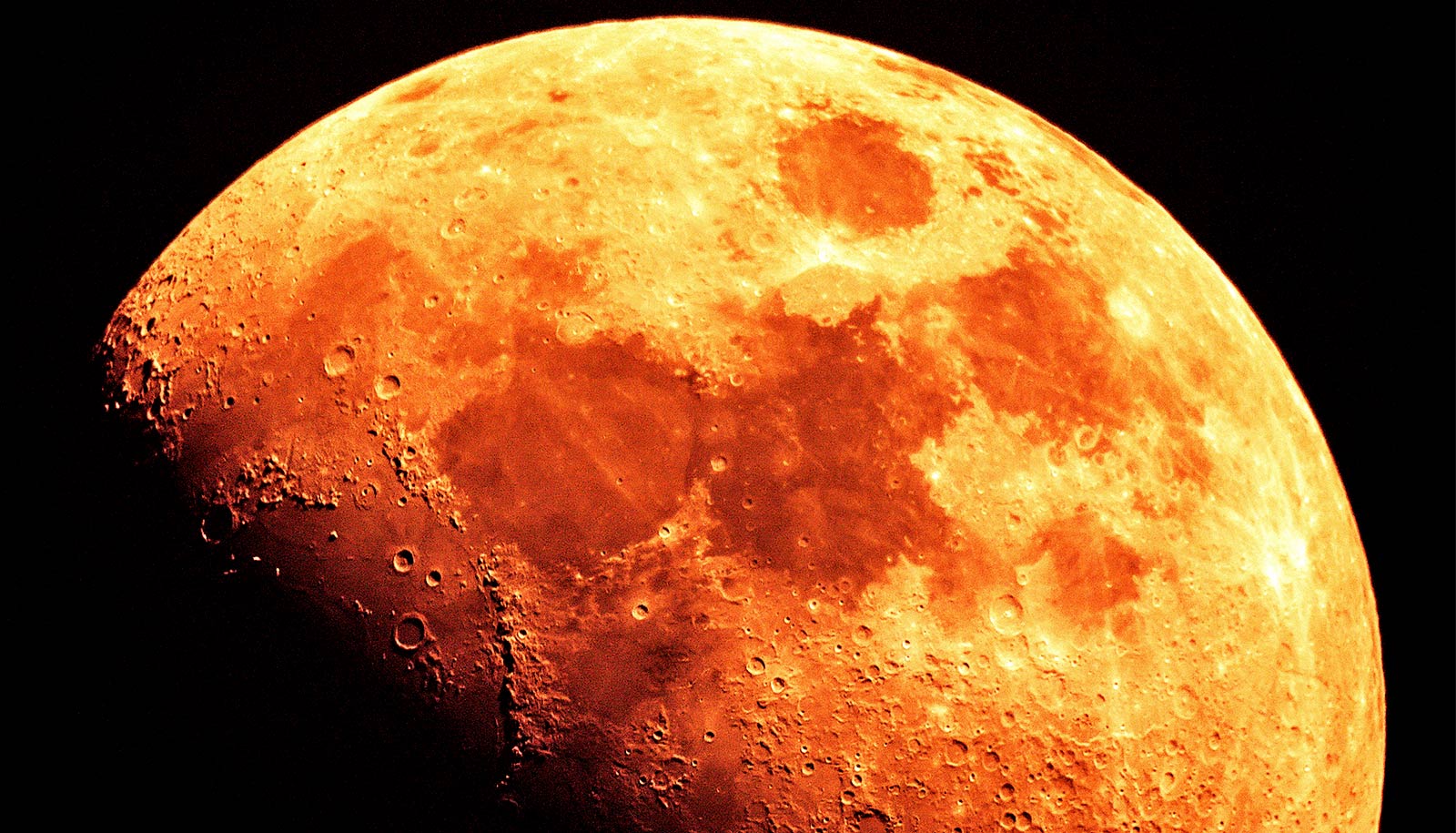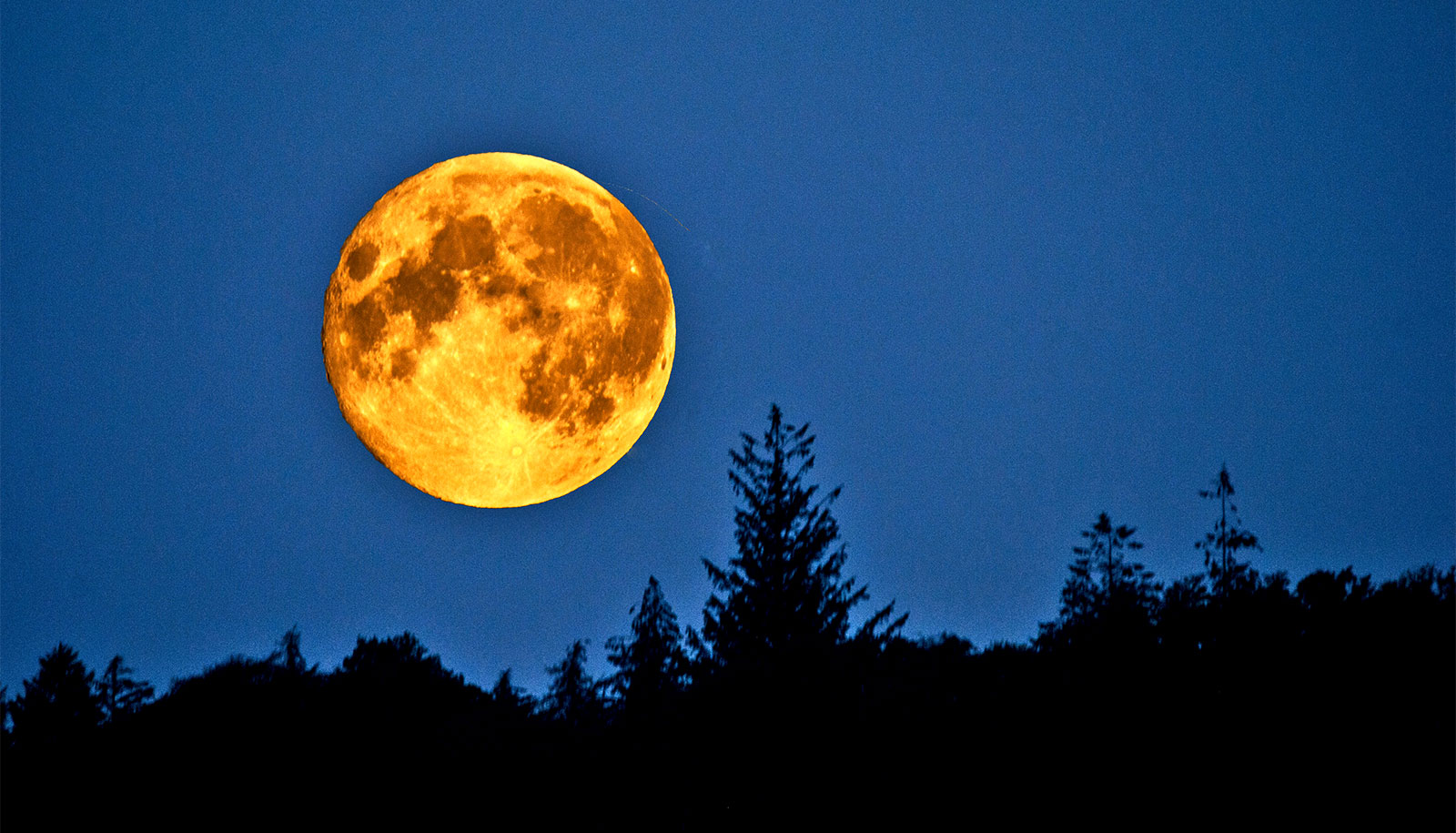Volcanic rock samples collected during NASA’s Apollo missions bear the isotopic signature of key events in the early evolution of the moon, a new analysis finds.
Those events include the formation of the moon’s iron core, as well as the crystallization of the lunar magma ocean—the sea of molten rock thought to have covered the moon for around 100 million years after it formed.
To conduct the analysis, published in Science Advances, researchers used a technique called secondary ion mass spectrometry (SIMS) to study volcanic glasses returned from the Apollo 15 and 17 missions, thought to represent some of the most primitive volcanic material on the moon.
“As we keep looking at these samples with newer and better techniques, we keep learning new things.”
The study looked specifically at sulfur isotope composition, which can reveal details about the chemical evolution of lavas from generation, transport, and eruption.
“For many years it appeared as though the lunar basaltic rock samples analyzed had a very limited variation in sulfur isotope ratios,” says coauthor Alberto Saal, a geology professor at Brown University.
“That would suggest that the interior of the moon has a basically homogeneous sulfur isotopic composition. But using modern in situ analytical techniques, we show that the isotope ratios of the volcanic glasses actually have a fairly wide range, and those variations can be explained by events early in lunar history.”
The sulfur signature of interest is the ratio of the “heavy” sulfur-34 isotope to the lighter sulfur-32. Initial studies of lunar volcanic samples found that they uniformly leaned toward the heavier sulfur-34. The nearly homogeneous sulfur isotope ratio contrasts with large variations in other elements and isotopes detected in the lunar samples.
The new study looked at 67 individual volcanic glass samples and their melt inclusions—tiny blobs of molten lava trapped within crystals inside the glass. Melt inclusions capture the lava before sulfur and other volatile elements are released as gas during eruption—a process called degassing.
As such, they offer a pristine picture of what the original source lava was like. Using the SIMS at the Carnegie Institution for Science, Saal with his colleague, the late Carnegie scientist Eric Hauri, measured the sulfur isotopes in these pristine melt inclusions and glasses, and used those results to calibrate a model of the degassing process for all the samples.
“Once we know the degassing, then we can estimate back the original sulfur isotope composition of the sources that produced these lavas,” Saal says.
Those calculations revealed that the lavas derived from different reservoirs within the interior of the moon with a wide range of sulfur isotope ratios. The researchers then showed that events in the moon’s early history could explain the range of values detected in the samples.
The lighter isotope ratio in some of the volcanic glasses, for example, is consistent with the segregation of the iron core from the early molten moon. When an iron core separates from other material in a planetary body, it takes a bit of sulfur with it. The sulfur that’s taken tends to be the heavier sulfur-34 isotope, leaving the remaining magma enriched in the lighter sulfur-32.
“The values we see in some of the volcanic glasses are fully consistent with models of the core segregation process,” Saal says.
Further cooling and crystallization of the early molten moon can explain the heavier isotope values. The crystallization process removes sulfur from the magma pool, producing solid reservoirs with heavier sulfur-34. That process is the likely source of the heavier isotope values found in some of the volcanic glasses and basaltic rocks returned from the moon.
“Our results suggest that these samples record these critical events in lunar history,” Saal says. “As we keep looking at these samples with newer and better techniques, we keep learning new things.”
The researchers need to do more work—and need to analyze more samples—to fully understand the moon’s sulfur isotopic composition, Saal says. But these new results help clarify long-standing questions about the composition of the moon’s interior, and bring scientists one step closer to understanding the moon’s formation and early history.
NASA’s Solar System Workings program funded the work.
Source: Brown University



